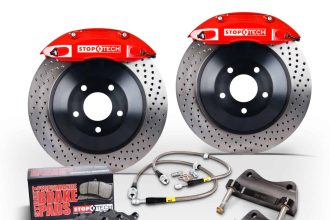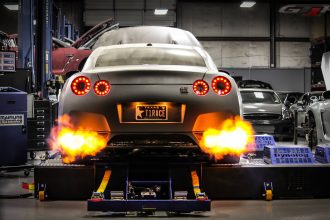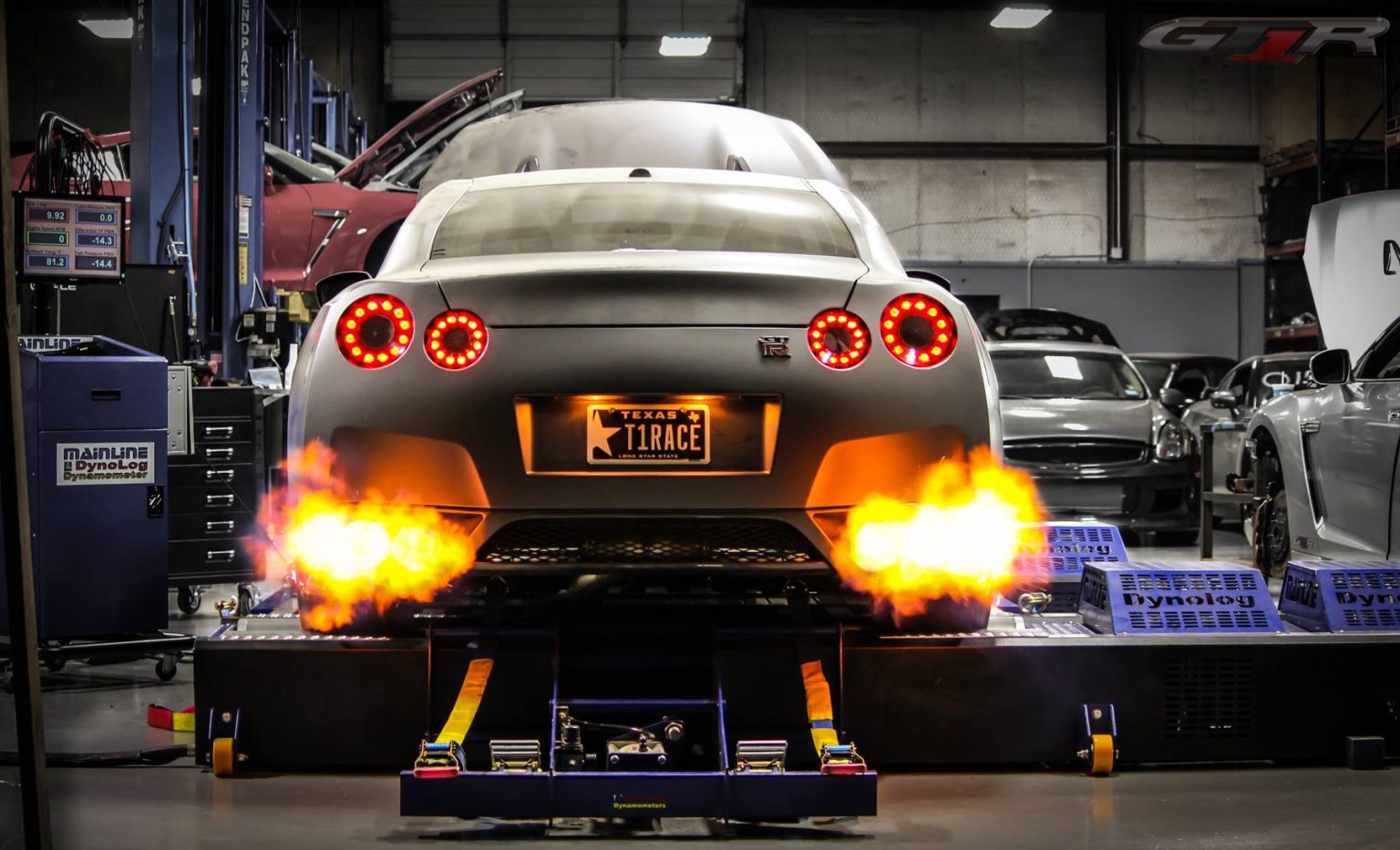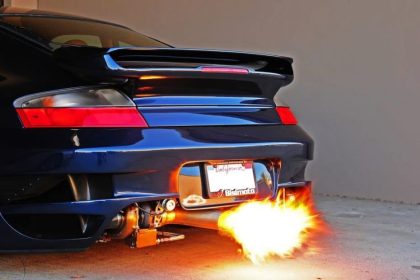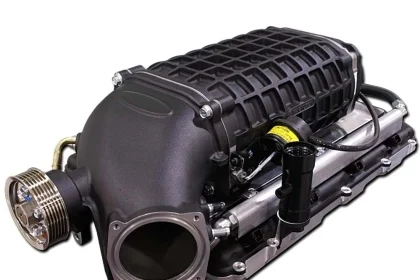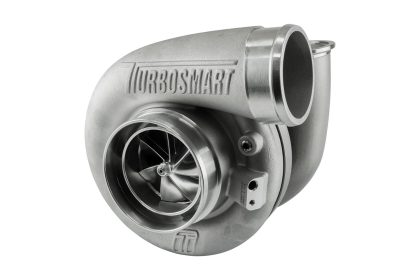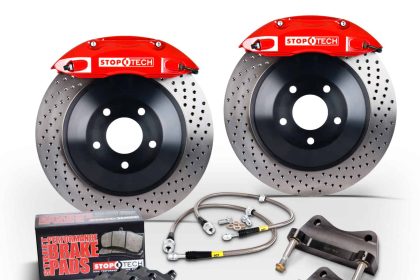They’re on every petrol and diesel vehicle. When improved they can increase power and when done badly annoy by-standers for miles. And if we’re honest, the biggest reason petrolheads hate EVs. Exhaust systems can affect how we feel about a vehicle & do more than just move hot air so let’s get into how they work.
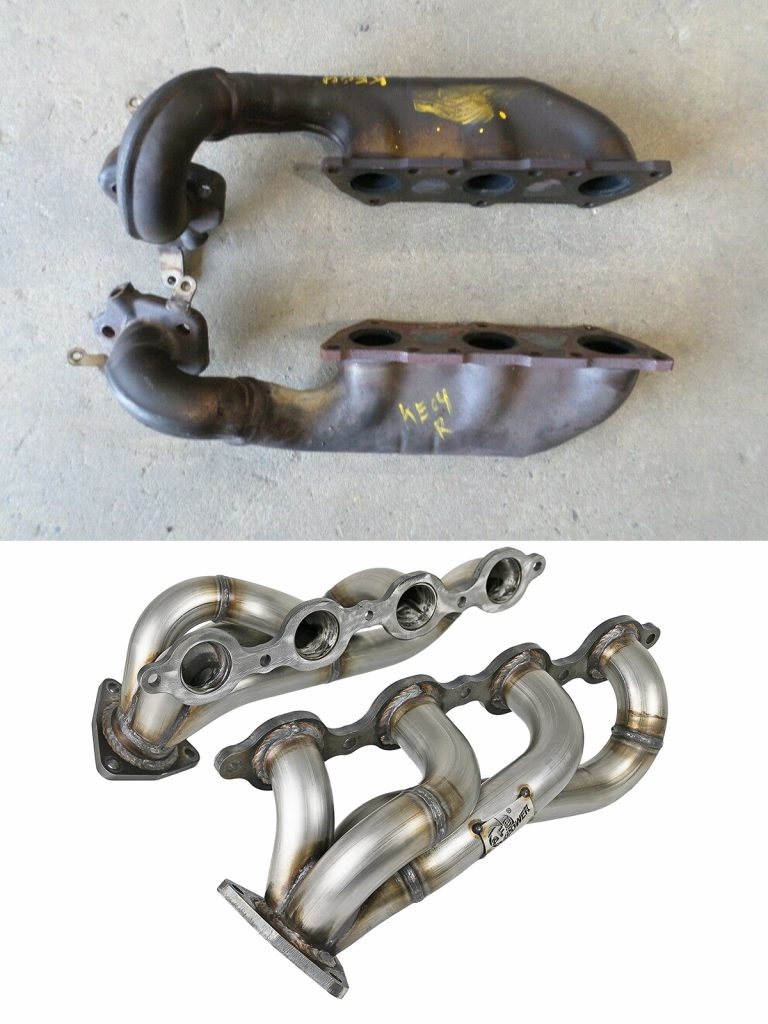
Headers & Exhaust Manifolds
Right after leaving the cylinders, the first place exhaust gases travel to is the exhaust manifolds or headers. Manufacturer manifolds are cast units, easily mass produced and just about good enough for the job. These are often known as log manifolds.
Common upgrades for naturally aspirated vehicles is some tubular, long or equal length headers. Tubular and long tube headers are lighter and can provide desirable scavenging effects. Turbocharged applications can also take advantage of tubular manifold for better spool characteristics.
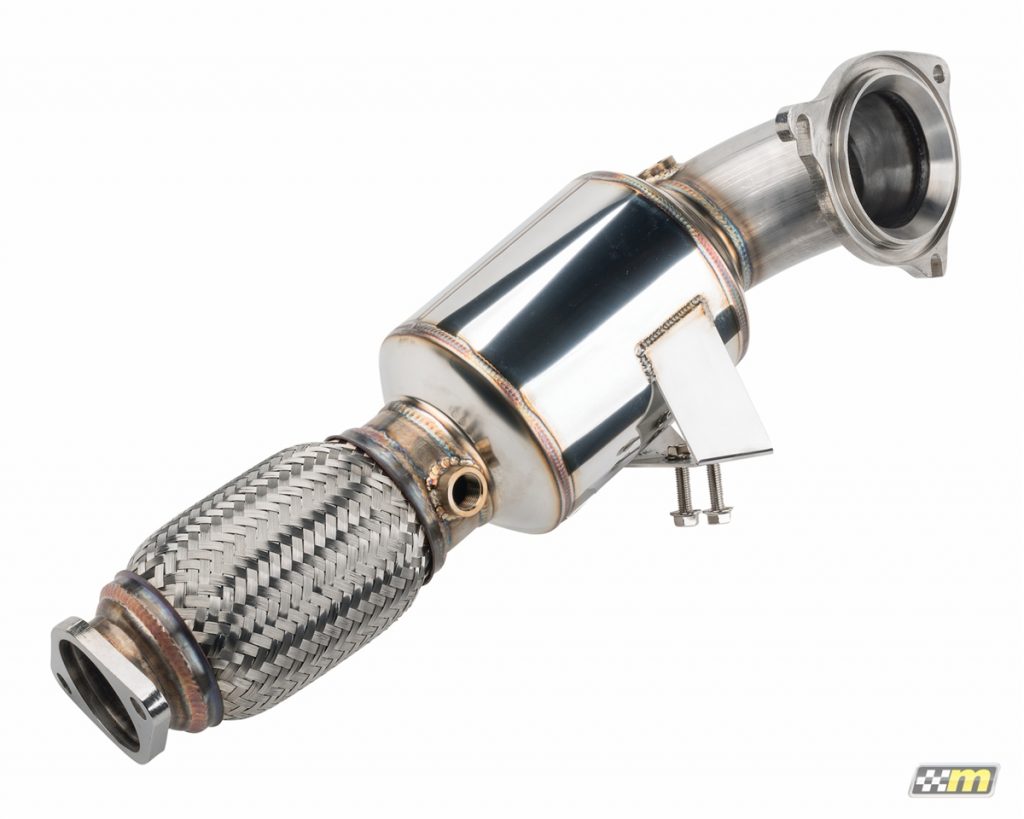
Down Pipes
Downpipes are strictly for turbocharged applications and attach to the exhaust housing of the turbocharger. OEM downpipes, like exhaust manifolds, are often heavy cast iron items. Aftermarket applications are usually stainless steel and offer much better flow to allow the turbos to spool up fast and offer as little back pressure as possible.
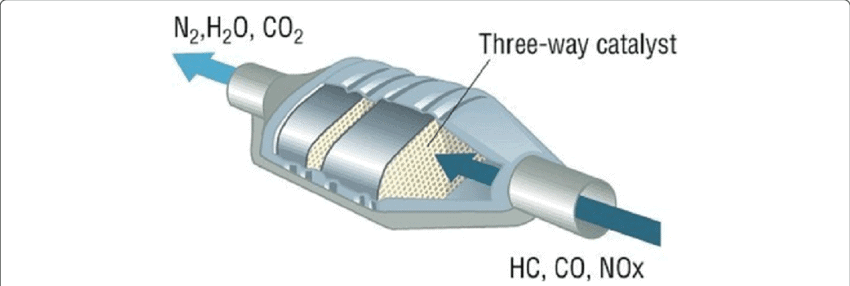
Catalytic Convertor
The catalytic convertor is next is the exhaust system. The catalytic convertor is a part of the emissions system of a vehicle. It converts harmful green house gases into less harmful compounds before they exit the exhaust using a honeycomb mesh of rare metals. Diesel vehicles also have diesel particulate filters. New petrol models are required to have petrol particulate filters to meet EU6c emissions standards. Particulate filters help the regular catalytic converter further reduce emissions. Although their primary purpose is to convert harmful gases they also mute the exhaust volume ( and stop any potential flames). There are a few different ways around these, some less environmentally friendly than others.
A de-cat (or test pipe) is the most common replacement for racing. The catalytic converter is completely removed and is replaced by a section of pipe. By removing the honeycomb mesh of the cat, the exhaust gas is less restricted and allows the engine to breath better, and make more power, especially at high rpms.
The more environmentally sound method, often used for daily drivers is a high flow catalytic converter. This aftermarket convertor allows vehicles to remain emissions compliant by using a less restrictive mesh. This gives the benefits of a better flowing exhaust while still filtering greenhouse gases.
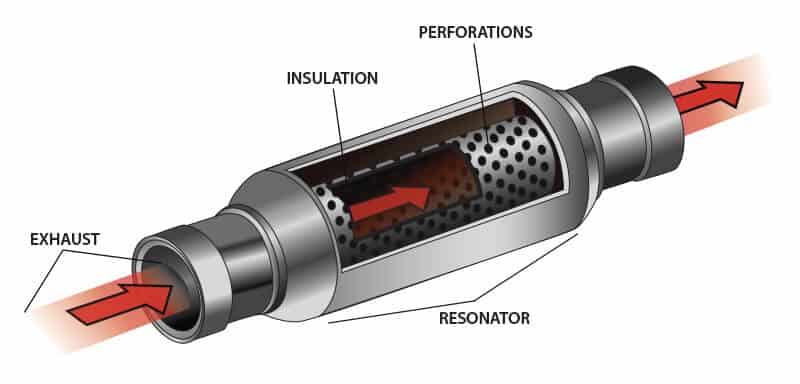
Resonators
Resonators often look like larger diameter sections of exhaust pipe.They aren’t essential to an exhaust system, but help shape the sound that an exhaust system makes. At certain rpms an engine and exhaust may make an undesirable noise, often a drone at highway speed. The resonator cancels out these specific frequencies.
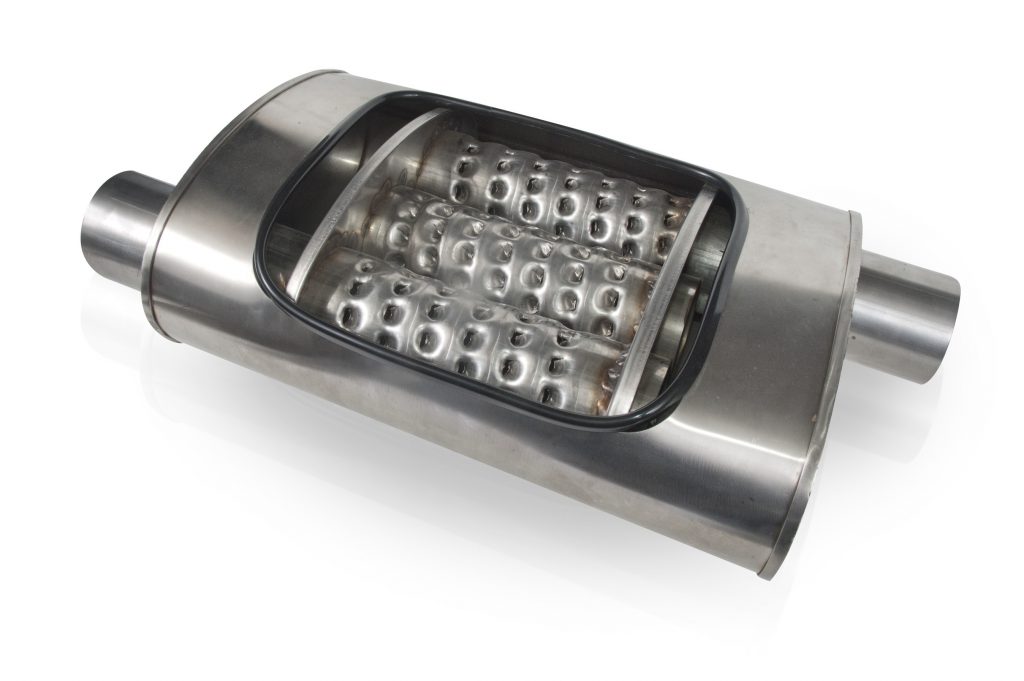
Mufflers
These go by different names, but arguably play the biggest role in the sound of the exhaust system as whole. As their name suggests, they muffle the sound of the exhaust. OEM applications make the exhaust note unobtrusive for the occupants of the vehicle. Locally we know them as “boosters”. They raise the volume of the exhaust, usually for a more sporty sound.
Mufflers come in different shapes and sizes. The required noise or performance determines the shape and size. Hotdog or straight-through mufflers, offer the least restriction and sound suppression. Oval Mufflers allow the exhaust gases to be quietened down significantly. The downside of this increased sound suppression is a more restrictive path for the gases to travel down.
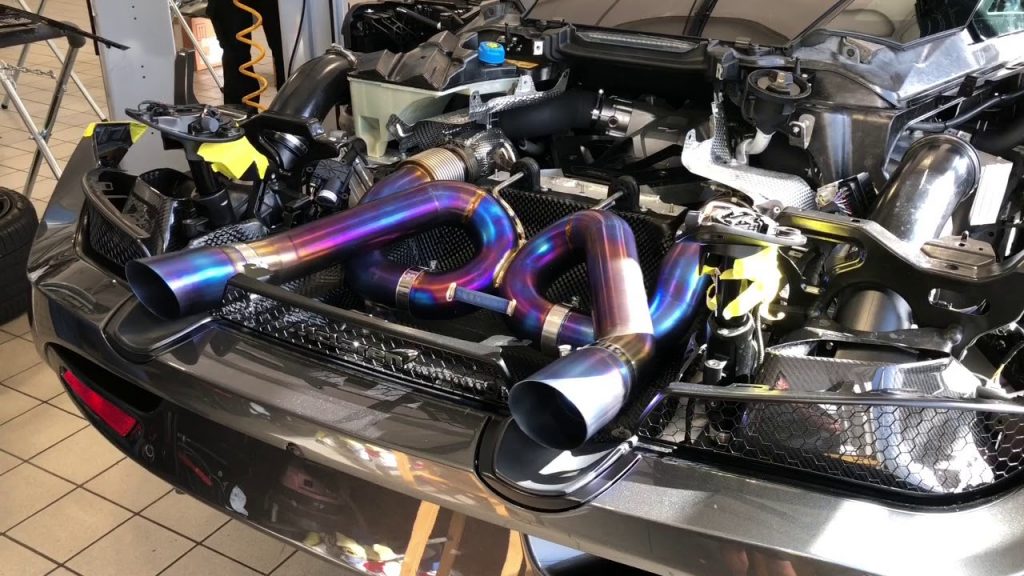
Exhaust Materials
Exhaust systems need to last the life of a vehicle (or at least the warranty period) and be easy/cheap to manufacture. The majority of OEM exhaust systems are made from mild steel. In aftermarket applications this is often the cheapest material to use for an exhaust and has a fairly long life span. Stainless steel is the next most common material. Off the shelf aftermarket stainless steel exhaust units bolt on in placed of the factory mild steel units and usually feature minimal bends to keep good exhaust flow. Stainless steel is more resistant to corrosion and will last longer than mild steel.
On the more exotic end of the spectrum are titanium and inconel exhausts. Titanium exhausts are the more “affordable” option. The use of titanium allows the exhaust to be lighter, whilst still being as strong and corrosion resistant. The bonus is that as the metal goes through it’s heat cycles the exhaust will become blue. However Inconel exhausts are even more expensive and their use in Formula 1 should give you an idea of just how pricey. For instance, high end supercars like the Ferrari 488 Pista use Inconel exhausts because they are lightweight. The downside of Inconel is how difficult it is to work with. For example, an aftermarket Inconel exhaust system for a Huracan costs around $10 000!
